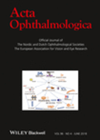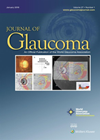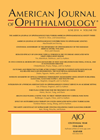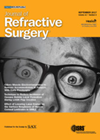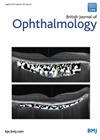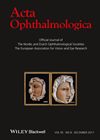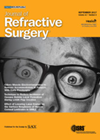
Journal Reviews
Does Ozurdex affect perfusion status in vein occlusion?
Ozurdex (intravitreal dexamethasone implant) has been approved by National Institute of Health & Care Excellence (NICE) for treatment of patients with macular oedema associated with vein occlusion. This study looks at the change in peripheral perfusion status in patients with...
Safe cataract extraction with underlying hypotonous cilio-choroidal detachment following trabeculectomy surgery
The authors of this study (including the reviewer of this article) describe a surgical technique for phacoemulsification in the presence of shallow choroidal detachment owing to hypotony following trabeculectomy. In their case series, four eyes of four patients with advanced...
Cataract in patients with pseudoexfoliation syndrome
The authors present a prospective comparative study in 43 patients with (group 1) or without (group 2) pseudoexfoliation (PXF) undergoing cataract surgery. Anterior capsule samples were obtained in all patients and analysed for signs of apoptosis by using special staining...
Cataract surgery in patients being treated for neovascular AMD
This retrospective matched case control study evaluated outcomes and predictive factors of visual acuity (VA) change after cataract surgery in patients being treated for neovascular age related macular degeneration (nAMD). They compared 124 patients that had cataract surgery with 372...
Low dose steroids for ocular dry eye disease in graft vs. host disease
This double-masked randomised clinical trial compared the response of dry eye disease (DED) to treatment with topical steroids in patients with and without graft vs. host disease (GVHD). Forty-two patients in a single centre (n=21 with and n=21 without GVHD)...
Assessment and management of dry eye disease
This paper is an update on the assessment and management of dry eye disease (DED). According to the second International Dry Eye Workshop 2017, “Dry eye is a multifactorial disease of the ocular surface characterised by a loss of homoeostasis...
Optical quality difference between monofocal and multifocal intraocular lenses
It is well known that multifocal intraocular lenses (IOLs) can generate more than one focus to restore distance and near vision, but patients may experience adverse optical phenomena such as decreased contrast sensitivity and induced glare or halos. The authors...
Capsular tension rings to reduce refractive shift
The study group aimed to determine whether the use of a capsular tension ring (CTR) can increase refractive stability in patients with implantation of two different trifocal intraocular lenses. This was a prospective, consecutive series of eyes which underwent refractive...
Cataract surgery in uveitis
This is a multicentre study of eight UK independent sites of patients with uveitis, undergoing cataract surgery between January 2010 and December 2014. A total of 1173 eyes were compared with a control reference group of 95,573 eyes from the...
Intraocular surgical training – is there any inter-procedural transfer of skills?
Cataract surgery is the most commonly performed surgery during ophthalmology training. This study aims to investigate how experience in simulated cataract surgery impacts and transfers to the learning curves for novices in vitreoretinal surgery. Twelve ophthalmology residents without previous experience...
LASEK with mitomycin C to correct myopia in thin corneas
This study evaluated the long-term outcomes of laser-assisted subepithelial keratomileusis (LASEK) with intraoperative use of mitomycin C (MMC) performed on thin corneas for the correction of myopia. MMC modulates the corneal wound healing response in surface healing, thus reducing the...
Comparison of corneal deformation parameters in keratoconic and normal eyes
This study set out to compare biomechanical properties between normal and keratoconic eyes. It was a retrospective study evaluating 89 eyes (47 normal, 42 keratoconic) and a validation arm of 72 eyes (33 normal, 39 keratoconic) using a high speed...

